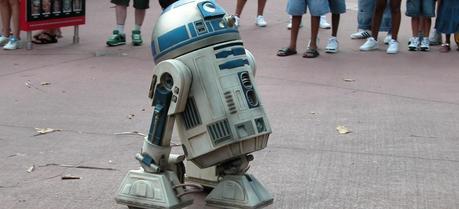 Study finds a way to save up to 40% energy in the propulsion of flexible robot joints. (Credit: Flickr @ D.Fletcher https://www.flickr.com/photos/dfletcher/)
Study finds a way to save up to 40% energy in the propulsion of flexible robot joints. (Credit: Flickr @ D.Fletcher https://www.flickr.com/photos/dfletcher/)Scientists at the University of the Basque Country (UPV/EHU) have found a way to save up to 40% energy in the propulsion of flexible robot joints without losing precision.
Robots are being increasingly used in industrial processes because of their ability to carry out repetitive tasks in a precise, reliable way. Right now, digital controllers are used to drive the motors of the joints of these robots. And it is no easy task developing and programming these controllers so that they will work efficiently. Unai Ugalde-Olea, lecturer in the Department of Electronics Technology of the UPV/EHU, has analyzed a way of propelling these systems or robots in a more energy-efficient way and has shown, on a laboratory level, that in some cases energy consumption can be cut by up to 40%. The study has been published in the journal Control Engineering Practice (see footnote).
SEE ALSO: Robots Will Repair Turbine Blades Faster and Cheaper
Let us imagine, for a moment, a robot hand that lifts a cup of coffee to its “lips” over and over again. The joint of this robotic hand needs a certain flexibility plus an electric motor to drive the upward and downward movements. So orders have to be sent to the motor so that the joint can perform the corresponding movements.
“The motors need to receive orders constantly. In fact, the motor has to know at all times what angle its axis has to be at. However, current digital controllers only issue orders at specific moments (in discrete time); they can be described as issuing orders by means of pulses: first an order, then a brief pause, then another order, another brief pause… and so on,” explained Unai Ugalde, lecturer in the UPV/EHU’s Department of Electronics Technology. The UPV/EHU researcher has in fact come up with a new proposal for this time interval in which there is no order.
On the whole, in industry, as long as no fresh order is issued, the previous order remains valid. In other words, until the new control order arrives, the previous one is executed. “In this study we have concluded that this way of working can be changed. We have used a polynomial function based on two values (that correspond to the two most recent orders) to reconstruct the process in some way,” explained Ugalde. “This is in fact what is new about the research,” he added.
Until now, the previous order was taken into account until the new control order was given; in other words, what in the literature on control systems is known as zero-order reconstruction was used. However, this is not the only option, and this research work has in fact focused on this aspect. Specifically, the researcher’s aim was to study and verify, experimentally, the advantages that could be gained from taking both orders into consideration, the last one and the penultimate one. When the reconstruction is linear on a constant, not flat slope, it is known as fractional-order reconstruction, and despite being well known, it has not been taken into consideration very much until now.
Ugalde has found that the polynomial or fractional order reconstructions may be of interest in flexible joints, as in the case of robot elbows and wrists. In fact, lab tests have shown that “the energy needed to drive the motors is considerably reduced. In ideal cases this reduction could be up to 40% without losing precision in the anticipated path,” explained Ugalde.
These tests were carried out in the lab and on a small-scale prototype, in other words, in ideal conditions. “The next step would be to check whether it is possible to achieve similar savings on an industrial scale. In any case, even if the savings are lower, in view of the cost of electrical power, it would be a significant step forward,” added the UPV/EHU researcher.
Ugalde, U., Bárcena, R., & Basterretxea, K. (2014). Generalized sampled-data holds to reduce energy consumption in resonant systems Control Engineering Practice, 26, 28-40 DOI: 10.1016/j.conengprac.2014.01.006
